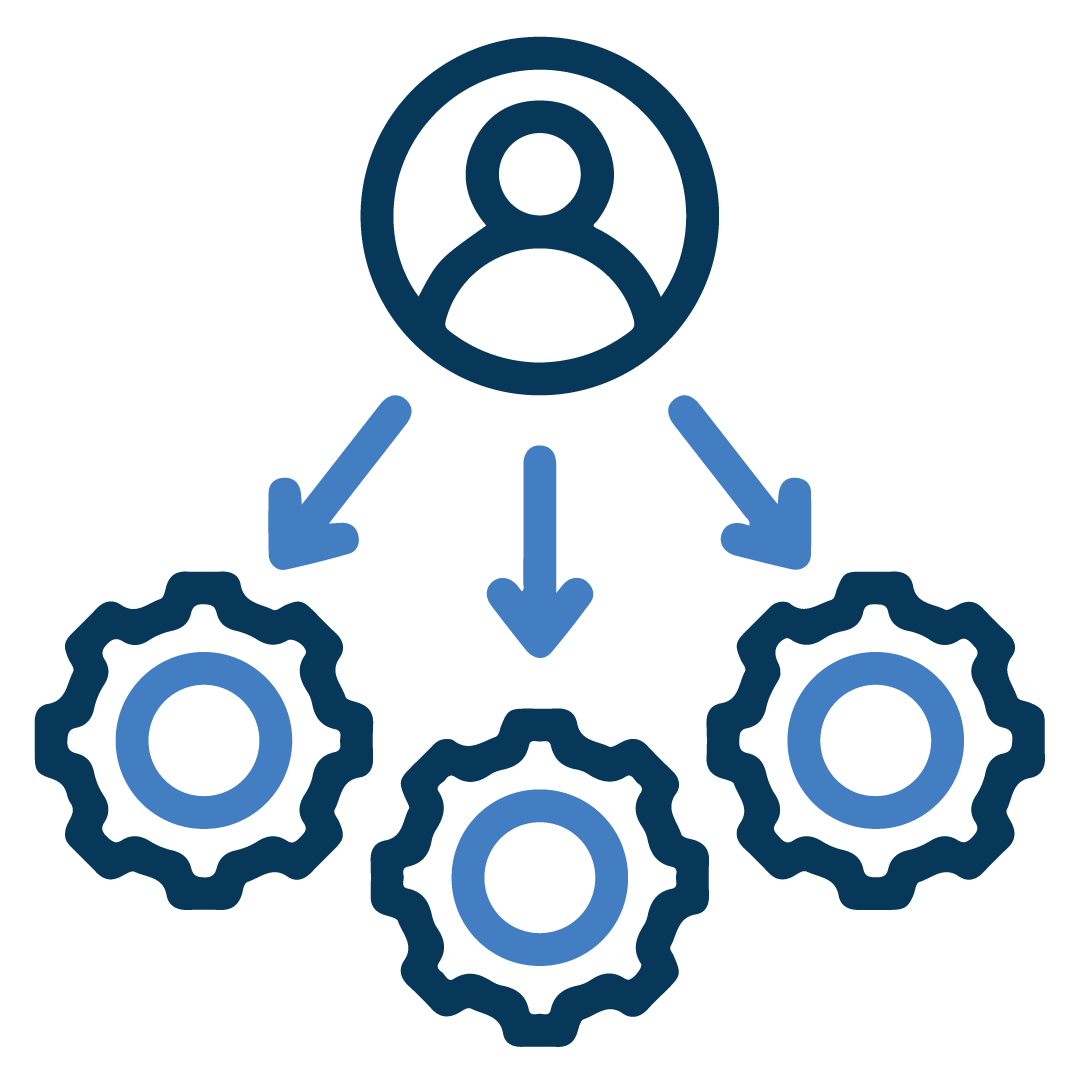Curated by: Luis Aburto

We have seen that being a Director of Engineering is more than a job; it’s a dynamic, ever-evolving challenge that demands an intricate dance with the complexities of modern technology and business. However, in this article, we will discuss the myriad reasons why the position of a Director of Engineering is not only one of the most challenging but also one of the most rewarding roles in the tech industry. From juggling financial constraints to navigating the intricate web of product features and deadlines, these leaders are tasked with propelling their teams toward the ultimate goal: crafting exceptional products that customers not only use but love.
Join us as we unravel the layers of complexity that make the role of a Director of Engineering truly unparalleled in the world of technology.
A challenging job
Directors of Engineering at technology companies face a multitude of challenges in their roles. Obviously, these challenges can vary depending on the company’s size, industry, and specific circumstances. However, the path for Directors of Engineering is seldom straightforward. According to the Directors of Engineering that we have worked with, the following are the most common challenges they typically encounter:
1. Team Management:
- Diverse Skill Sets: Managing a team with diverse technical skills and backgrounds can be challenging. Directors need to foster collaboration and effective communication among team members with different expertise.
- Team Dynamics: Building and maintaining a positive team culture, addressing conflicts, and ensuring team members are motivated and engaged are ongoing challenges.
2. Project Delivery:
- Timely Delivery: Balancing the need for quick product delivery with maintaining high-quality standards is a constant challenge.
- Scope Management: Managing scope creep and ensuring that teams are focused on delivering key priorities can be difficult, especially in dynamic and evolving project environments.
3. Technology Changes:
- Rapid Technological Advancements: Trying to stay abreast of the latest technologies and trends in the industry to make informed decisions about technology adoption and updates.
- Legacy Systems: Integrating and modernizing legacy systems without disrupting ongoing operations can be a complex task.
4. Resource Allocation:
- Resource Constraints: Allocating resources effectively, including balancing workloads, addressing skill gaps, and managing budget constraints.
- Optimizing Productivity: Ensuring that the engineering team is working efficiently and productively while maintaining a healthy work-life balance.
5. Strategic Planning:
- Aligning with Business Goals: Ensuring that engineering efforts align with overall business objectives and contribute to the company’s strategic goals.
- Long-Term Planning: Developing and executing long-term engineering strategies to keep the company competitive in the market.
6. Talent Acquisition and Retention:
- Attracting Top Talent: Recruiting skilled professionals and competing for top talent in a competitive market.
- Employee Retention: Retaining key team members and addressing turnover challenges by providing growth opportunities and a positive work environment.
7. Communication and Collaboration:
- Interdepartmental Communication: Facilitating effective communication between engineering teams and other departments, such as marketing, sales, and customer support.
- Cross-Functional Collaboration: Encouraging collaboration between engineering and other departments to ensure a seamless product development lifecycle.
8. Regulatory Compliance and Security:
- Compliance Challenges: Depending on the industry, navigating regulatory requirements and ensuring that products and processes adhere to industry standards and regulations.
- Cybersecurity Concerns: Addressing and mitigating cybersecurity risks to protect the integrity of systems and data.
9. Scaling Operations:
- Managing Growth: Scaling engineering operations to accommodate company growth while maintaining efficiency and quality.
- Global Expansion: Handling challenges associated with global expansion, including managing distributed teams and diverse cultural considerations.
10. Innovation and Continuous Improvement:
- Encouraging Innovation: Fostering a culture of innovation within the engineering team to drive continuous improvement.
- Adapting to Change: Embracing and managing change, especially in dynamic market conditions and evolving customer demands.
Directors of Engineering navigate these challenges by employing effective leadership, communication, and strategic planning to ensure the success of their teams and contribute to the overall success of the company.

Rewards make it worthwhile
While being a Director of Engineering at a technology company comes with its share of challenges, there are also numerous rewarding aspects that make the role fulfilling and impactful. Here are some of the key rewarding aspects that have been shared with us:
1.Innovation Leadership:
- Driving Technological Advancements: Directors of Engineering have the opportunity to lead their teams in pushing the boundaries of technology. They play a pivotal role in steering the company towards adopting and implementing cutting-edge technologies to stay ahead of the competition.
2. Product Development and Launch:
- Bringing Ideas to Life: Directing the development of a product from conceptualization to launch is inherently satisfying. Witnessing an idea evolve into a tangible, market-ready product can be immensely rewarding for Directors of Engineering.
3. Team Empowerment:
- Building and Leading High-Performing Teams: The ability to build and lead a high-performing engineering team is a gratifying aspect of the role. Directors get to mentor and empower talented professionals, fostering a culture of collaboration and innovation.
4. Problem-Solving and Challenges:
- Tackling Complex Challenges: Successfully navigating through complex challenges, whether they are technical, operational, or strategic, provides a sense of accomplishment. Directors of Engineering thrive on problem-solving and finding creative solutions to hurdles that arise during product development.
5. Impact on Company Success:
- Contribution to Company Growth: As a key player in the leadership team, Directors directly contribute to the overall success and growth of the company. Their decisions and strategic direction influence not only the engineering department but the whole company.
6. Customer Satisfaction:
- Creating Products Customers Love: The ultimate reward comes when the products developed under the leadership of Directors are embraced by customers. Knowing that the team’s efforts have resulted in a product that meets or exceeds customer expectations is incredibly gratifying.
7. Professional Growth:
- Continuous Learning and Development: The role of a Director of Engineering is a journey of continuous learning. Staying abreast of technological advancements, industry trends, and leadership strategies contributes to professional growth, making the role intellectually stimulating.
8. Cross-Functional Collaboration:
- Collaboration with Diverse Teams: Working closely with cross-functional teams, including marketing, sales, and customer support, fosters a holistic understanding of the business. Directors of Engineering find reward in collaborating with professionals from diverse backgrounds to achieve common goals.
9. Strategic Decision-Making:
- Strategic Impact: Directors have the opportunity to shape the strategic direction of the company. Making impactful decisions that align with long-term goals and drive the company forward is a rewarding aspect of the role.
10. Recognition and Leadership Impact:
- Leadership Recognition: Successfully leading an engineering team and contributing to the company’s success often results in recognition and acknowledgment. Being seen as a leader who makes a difference in the organization is inherently rewarding.
In essence, the role of a Director of Engineering is a dynamic journey that combines technical expertise, leadership acumen, and a passion for innovation. The rewards extend beyond the successful development of products to include personal and professional growth, the satisfaction of overcoming challenges, and the knowledge that one’s contributions shape the future of both the engineering team and the company as a whole.
PARTNERS CAN LIGHTEN THE BURDEN
Fortunately, Directors of Engineering do not have to walk this path alone. They often collaborate with various partners to navigate challenges and enhance the overall effectiveness of their roles. These partners can provide support in different areas, ranging from technical expertise to strategic guidance. Here is a list of common partners for a Director of Engineering:
1.IT and Technology Consultants:
- Role: External IT and technology consultants can offer specialized expertise and strategic advice on technology adoption, infrastructure optimization, and process improvements.
- Benefits: Access to external perspectives, industry best practices, and cutting-edge technologies without the need for extensive in-house training.
2. Nearshore and Offshore Development Teams:
- Role: Nearshore or offshore development teams can serve as an extension of the in-house engineering team, providing additional resources for specific projects or to address skill gaps. Nearshore teams are especially effective because they have greater cultural alignment and can collaborate in real-time during regular business hours.
- Benefits: Scalability, cost-effectiveness, and access to a diverse pool of skilled professionals with various expertise.
3. Product Managment Consultants:
- Role: Product management consultants can collaborate with Directors to refine product strategies, enhance development processes, and ensure alignment with market demands.
- Benefits: Improved product-market fit, streamlined product development processes, and strategic guidance for product roadmaps.
4. Legal and Compliance Advisors:
- Role: Legal and compliance advisors help Directors navigate regulatory challenges, intellectual property issues, and other legal considerations associated with technology development.
- Benefits: Mitigation of legal risks, ensuring compliance with industry regulations, and protecting intellectual property.
5. Industry and Professional Associations:
- Role: Directors can benefit from networking with industry associations and professional groups, gaining insights from peers and staying informed about industry trends.
- Benefits: Access to a professional community, knowledge sharing, and opportunities for collaborative learning and problem-solving.
6. Cloud Service Providers:
- Role: Cloud service providers offer scalable and flexible infrastructure solutions, supporting Directors in optimizing operations and enabling efficient development processes.
- Benefits: Cost-effective and scalable infrastructure, enhanced security measures, and access to a range of cloud-based tools and services.
7. Agile Coaches and Scrum Masters:
- Role: Agile coaches and Scrum Masters can assist in implementing and optimizing agile methodologies, fostering a culture of continuous improvement within the engineering team.
- Benefits: Improved project efficiency, faster time-to-market, and increased adaptability to changing project requirements.
These partners act as valuable allies for Directors of Engineering, providing expertise, support, and resources to address specific challenges. The key is to strategically choose partners based on the unique needs and objectives of the engineering team.

CONCLUSION
In the dynamic realm of the technology industry, where innovation is the heartbeat of progress, the role of the Director of Engineering emerges as both a formidable challenge and an unparalleled adventure. Navigating the intricate tapestry of budgets, deadlines, and evolving product features requires a delicate balance that demands unwavering dedication and resilience. Yet, as we discussed, amidst the challenges lies a tapestry of rewards that makes this role not only one of the most demanding but also profoundly fulfilling.
The impact on the lives of the members of the engineering team, as well as the impact on the company success, is perhaps one of the most significant rewards. Moreover, the role of a Director of Engineering offers continual learning and development. Staying at the forefront of technological advancements, understanding industry trends, and mastering leadership strategies contribute to the director’s intellectual growth and are a source of motivation.
In conclusion, thru partnering with many Directors of Engineering at a technology companies, we have seen first-hand how this role is an adventure that combines the thrill of innovation, the satisfaction of overcoming challenges, and the knowledge that one’s contributions shape the future of both the engineering team and the company as a whole. Directors of Engineering are not just leaders; they are the architects of tomorrow’s technological landscape.
